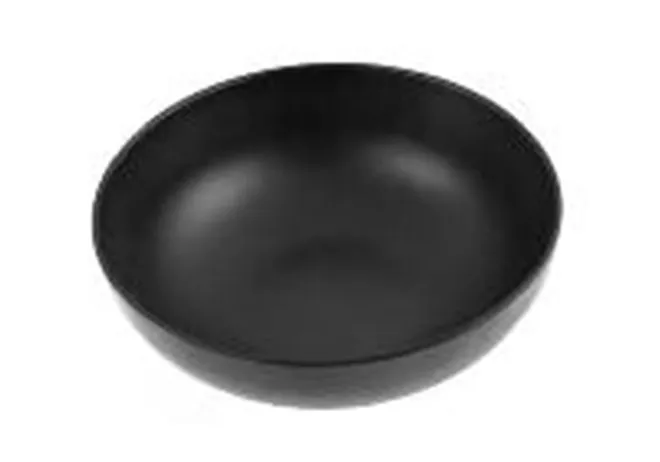-
Cangzhou Yulong Steel Co., Ltd.
-
Phone:
+86 13303177267 -
Email:
admin@ylsteelfittings.com
- English
- Arabic
- Italian
- Spanish
- Portuguese
- German
- kazakh
- Persian
- Greek
- French
- Russian
- Polish
- Thai
- Indonesian
- Vietnamese
- Zulu
- Korean
- Uzbek
- Hindi
- Serbian
- Malay
- Ukrainian
- Gujarati
- Haitian Creole
- hausa
- hawaiian
- Hebrew
- Miao
- Hungarian
- Icelandic
- igbo
- irish
- Japanese
- Javanese
- Kannada
- Khmer
- Rwandese
- Afrikaans
- Albanian
- Amharic
- Armenian
- Azerbaijani
- Basque
- Belarusian
- Bengali
- Bosnian
- Bulgarian
- Catalan
- Cebuano
- China
- China (Taiwan)
- Corsican
- Croatian
- Czech
- Danish
- Esperanto
- Estonian
- Finnish
- Frisian
- Galician
- Georgian
- Kurdish
- Kyrgyz
- Lao
- Latin
- Latvian
- Lithuanian
- Luxembourgish
- Macedonian
- Malgashi
- Malayalam
- Maltese
- Maori
- Marathi
- Mongolian
- Myanmar
- Nepali
- Norwegian
- Norwegian
- Occitan
- Pashto
- Dutch
- Punjabi
- Romanian
- Samoan
- Scottish Gaelic
- Sesotho
- Shona
- Sindhi
- Sinhala
- Slovak
- Slovenian
- Somali
- Sundanese
- Swahili
- Swedish
- Tagalog
- Tajik
- Tamil
- Tatar
- Telugu
- Turkish
- Turkmen
- Urdu
- Uighur
- Welsh
- Bantu
- Yiddish
- Yoruba

Sep . 23, 2024 19:20 Back to list
Understanding Rust Formation in Galvanized Pipes Internally and How to Prevent It
Understanding Rust Formation in Galvanized Pipe
Galvanized pipes, widely used in plumbing and infrastructure, have long been favored for their corrosion resistance. These pipes are coated with a layer of zinc, which acts as a barrier against moisture and oxygen—two primary factors that contribute to rust formation. However, despite their protective coating, galvanized pipes can still experience rusting, particularly from the inside. In this article, we will explore the reasons behind this phenomenon, the implications for plumbing systems, and possible preventive measures.
The Nature of Galvanization
Galvanization is the process of applying a protective zinc coating to steel or iron to prevent rust formation. The zinc serves as a sacrificial anode, meaning it will corrode first before the steel can begin to rust. This can provide a lifespan of several decades under ideal conditions. However, the effectiveness of this protective layer is influenced by several factors, including environmental conditions, the quality of the galvanization, and the water’s chemistry flowing through the pipes.
Internal Rust Formation
Despite being galvanized, pipes can rust from the inside due to various reasons
1. Water Quality The chemistry of the water being transported can significantly affect the longevity of galvanized pipes. If the water has a high level of acidity or contains corrosive minerals (e.g., chlorine, sulfate), it can erode the zinc coating over time. This situation is particularly common in areas where water is treated with harsh chemicals, leading to accelerated corrosion.
2. Dirt and Debris Accumulation Over time, sediments and debris can accumulate inside galvanized pipes, leading to stagnation of water. Stagnant water can become corrosive, further accelerating rust formation. Additionally, the accumulation of minerals can lead to scaling, which compromises the integrity of the zinc coating.
3. Temperature Fluctuations Changes in temperature can lead to condensation forming inside the pipes, creating a moist environment conducive to rust formation. When condensation occurs, moisture can come into contact with the steel beneath the zinc layer, initiating the corrosion process.
4. Microbiological Influences In some cases, biofilms composed of microorganisms can develop on the internal surfaces of pipes. These biofilms can create localized acidic environments conducive to corrosion, further exacerbating rusting even in galvanized systems.
galvanized pipe rusting inside

Implications of Rust in Galvanized Pipes
Rust formation within galvanized pipes can have serious implications for plumbing systems. As the pipe rusts, the structural integrity may deteriorate, leading to leaks, bursts, or reduced water flow. Additionally, deteriorating pipes can release rust particles into the water supply, leading to discoloration and undesirable tastes. In severe cases, rust infiltration can compromise water quality, raising health concerns.
Preventive Measures
To mitigate rust formation in galvanized pipes, several preventive measures can be implemented
1. Regular Inspections Periodic checks of the plumbing system can help identify rust formation early. Look for signs of leaks, discoloration, or reduced water pressure.
2. Water Treatment If water quality issues are suspected, consider water treatment solutions to neutralize acidity and remove corrosive minerals. Water softeners or filtration systems can effectively improve water quality.
3. Cleaning Regularly flushing the pipes can help remove accumulated debris and sediments that exacerbate rusting. Hydro flushing or using specialized cleaning equipment may be necessary for larger installations.
4. Upgrading to Modern Materials In areas with poor water quality or where galvanized pipes show significant wear, replacing them with more durable materials such as PVC, CPVC, or PEX may be advisable. These materials are inherently resistant to corrosion.
Conclusion
While galvanized pipes provide effective protection against corrosion, they are not impervious to rust formation from the inside. Understanding the underlying causes of this issue and implementing preventive measures can help maintain the integrity of plumbing systems. By taking proactive steps, homeowners and facility managers can extend the lifespan of their galvanized piping while ensuring safe and reliable water delivery.
Latest news
-
ANSI 150P SS304 SO FLANGE
NewsFeb.14,2025
-
ASTM A333GR6 STEEL PIPE
NewsJan.20,2025
-
ANSI B16.5 WELDING NECK FLANGE
NewsJan.15,2026
-
ANSI B16.5 SLIP-ON FLANGE
NewsApr.19,2024
-
SABS 1123 FLANGE
NewsJan.15,2025
-
DIN86044 PLATE FLANGE
NewsApr.19,2024
-
DIN2527 BLIND FLANGE
NewsApr.12,2024
-
JIS B2311 Butt-Welding Fittings LR/SR 45°/90° /180°Seamless/Weld
NewsApr.23,2024











